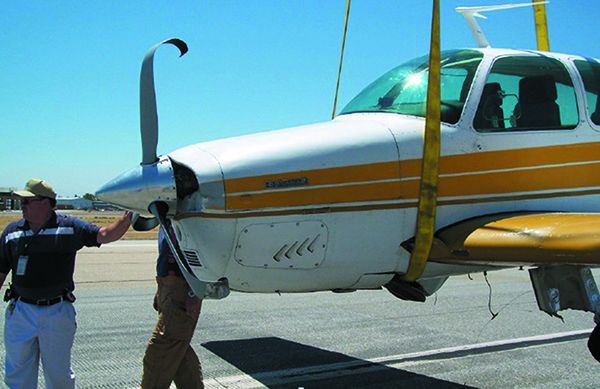
We get it. Until two years ago, aviation insurance rates were at historic lows due to overcapacity in the market. A few insurers bailed out because, as we understand, they couldn’t afford to keep losing money. Now supply and demand has swung the pendulum the other way and the price of insurance premiums has shot upward.
Owner-flown turbines and high-performance piston airplanes have taken the biggest hit—as much as 50 percent rate increases over 18 months. The rate hikes for piston singles haven’t been as dramatic, but insurance price sticker shock has hit all of general aviation.
Not surprisingly, the reaction of the pilot community to insurance price hikes has not been friendly, although the vast majority have grumbled and paid the new premiums. However, we’re hearing from a number of owners that they are going to “self-insure” rather than continue to buy insurance.
We’ll note right here that if you took out a loan to buy your airplane and it isn’t paid off, the lender almost certainly requires you to carry insurance so you can’t self-insure.
We’ve also observed that if a pilot has the financial wherewithal to own an airplane, the odds are the pilot also has some other assets that would be at risk following an injury accident, so insurance generally makes sense to protect those assets. By the same taken, we’ve seen more than a few broke college kids who pooled their money and bought an older airplane. They didn’t buy insurance because they didn’t have any assets to protect.
There have always been pilots who refused to buy any sort of insurance for their airplanes for various reasons and we’ve heard a few—only a few—horror stories of lawsuits cleaning them out after an accident. Because we’re hearing more pilots say that they are going to self-insure, we decided to look into what that means and what the risks are in more detail. After all, there is a difference between a reasoned decision to self-insure and take appropriate steps to protect oneself against a loss and “going bare”—where an owner potentially risks disastrous financial repercussions after a crash.
Self-insuring is ordinarily a carefully calculated plan engaged in by large corporations where the company faces an annual level of risk of loss for its activities that can be reasonably predicted. A company that makes a product should have a pretty good feel for what it is going to pay each year for claims against it. That company then sets aside money to cover those claims. Done correctly, that’s cheaper than buying insurance because the company doesn’t have to pay for the insurer’s profit.
What if the company guesses wrong and the claims against it are for more than it set aside? That’s easy; the company buys what is known as excess insurance—for what is usually a relatively modest price—to cover the risk of a catastrophic loss year. It’s all to take advantage of the laws of very large numbers. If you put enough risks into one bag, things average out to a predictable level.
GRIM REALITY
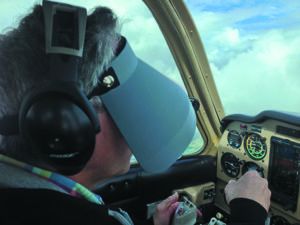
Most individuals don’t have the financial wherewithal to truly self-insure. They don’t put aside a pile of money each year to cover their risk of loss in that year. Don’t believe us? Check around to see how many owners you know who set aside money each hour they fly their airplanes in anticipation of the engine and prop overhauls. We’re human, we’re pilots—yes, tightwads. In reality, what we do is tell ourselves that something bad won’t happen to us so we’re not going to spend the money on insurance or set aside money to have a nest egg to cover a potential loss.

The vast majority of owners who don’t buy insurance are going bare—they are risking their financial well-being if they have an accident.
ANALYZING RISK
Stripped to the essentials, the risks that an aircraft owner faces when owning an airplane are twofold: First, that the airplane is damaged and needs to be repaired or replaced; second, the owner, as pilot, rolls the airplane into a ball and gets sued.
THE HULL
Let’s start with damage or destruction to the aircraft itself. To protect against the cost of fixing or replacing their airplanes, owners typically buy what the insurance world calls hull insurance. (When aircraft insurance started up insurers borrowed a lot of terms from admiralty insurance.)
When you buy the insurance, you and your insurance company agree on the value of the airplane—and you adjust that value each year as the market changes or you add equipment to your bird. If you tear up the airplane, your insurer either pays for repairs or, if it cannot economically be repaired, sends you a check for the agreed value of the airplane and keeps the wreckage.
When it comes to what owners tell us is self-insurance, we have found that it is most commonly on done only on the hull—the aircraft itself. In our experience, owners who don’t buy hull insurance do so on airplanes that are modestly priced—if any may be so described.
Our recommendation to an owner who is considering self-insuring the hull of her airplane is to ask herself two penetrating questions and give honest answers.
1. Am I willing to set aside some percentage of the value of the airplane in a dedicated bank account until I have enough money in it to replace the airplane?
2. If the answer to the above question is no, am I willing to walk away from my airplane, and every cent that I have in it, if a sudden windstorm or I, screwing up when flying, total it?
We think the second question is the telling one as we have had no “self-insuring” owner tell us that he has been putting money into a self-insurance bank account.
We also don’t believe owners when they tell us that they are perfectly willing to walk away from the $60,000 an owner has sitting in his hangar in the form of a Beech Musketeer if things go south in a crosswind.
In our humble opinion, we think that most “self-insuring” owners believe deep down inside that “It can’t happen to me, I’m way too cool to wreck my airplane.”
We’ll add it as an aside right here. If you hangar your airplane, there’s a good chance that your aircraft hull insurance covers at least some of the hangar and its contents. If you self-insure, you give that up.
We fully recognize that owning an airplane is expensive and we are constantly looking for ways to cut down on the cost. Nevertheless, we are of the opinion that an owner should spend some quality introspective time considering risk and visualizing the pile of cash her airplane represents before making an informed decision to not buy hull insurance.
LIABILITY RISK
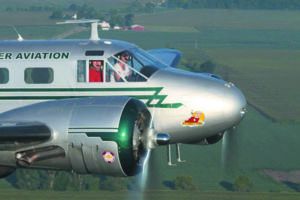
The more significant risk to an aircraft owner is that of having to defend a lawsuit alleging that the owner is liable for damages following an accident.
The second half of aviation insurance is for liability coverage—and, yes, you can buy liability insurance even if you decide not to buy hull insurance.
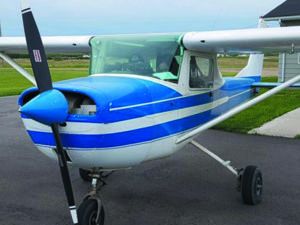
If you’re thinking of self-insuring for your liability risk consider that, first of all, whether a lawsuit has any merit, it must be defended. Figure on dropping on the order of $15,000 to hire an attorney just to get started, to get up to speed on the facts, research the law—especially in a specialized area such as aviation—and file an answer to the complaint.
Again, that’s just to get started. It goes up from there. Way up.
So, if you are planning to self-insure for liability, do you have that kind of money that you are willing to spend even if you had nothing to do with the cause of the crash?
NO SILVER BULLET
We’ve had pilots tell us that they don’t have to worry about getting sued because of some legal dodge that they are certain will insulate them. The two most common are that they put their airplane into a corporation (or LLC) or that they set up a corporation (or LLC) and do everything through it. Their logic is that someone who gets hurt can only sue the corporation. Of course it doesn’t have any assets.
It won’t work.
If you are the one flying the airplane, you will be held personally responsible for injuries caused if you were negligent in the operation of the aircraft. That’s it. It’s a cold, hard fact.
There aren’t any silver bullets to allow yourself to dodge legal responsibility for messing up when flying an airplane. Remember, the FAA puts it on your shoulders in FAR 91.3 with its “directly responsible for” and “final authority” in describing you, the PIC.
The longtime rule of thumb for a business facing a risk is to insure it. We think that it’s a pretty good rule of thumb.
EXPOSURE
If an owner has thought long and hard about liability insurance and decides to forgo it, we do have a few suggestions to reduce the exposure to getting sued.
• Don’t carry passengers. If you don’t hurt someone in the accident, you won’t get sued. There’s the risk that you’ll hurt someone on the ground but, in reality, that’s pretty low. We’ve heard of oddball accidents such as a non-passenger walking into a prop on a busy ramp but they are, thankfully, rare.
• If you carry passengers, limit them to family. While some of the worst legal fights we’ve seen have been between family members, historically this may reduce the risk of being sued following an accident.
• You’ll need to consult with an attorney to see if it will work in your state, but having your passenger(s) sign a waiver of liability may help.
• Don’t fly over or in congested areas or airspace and do constantly scan for other aircraft. If there are fewer aircraft in your area of the sky or on the airports you use, you’re less likely to bump into one of them. If you don’t fly over populated areas, you’re less likely to hit something valuable if you have a forced landing.
In putting together this magazine we look at hundreds of accident reports every year and we peruse accident data in detail. What we see is consistent in one regard: The general aviation accident rate may be slowly decreasing but mistakes made by human pilots stubbornly remains as the cause of at least 80 percent of the crashes.
RECURRENT TRAINING
Accident data also show that the longer it’s been since the pilot had recurrent training (usually a flight review), the higher the chance of the pilot being involved in an accident.
That being the case, we firmly believe that whether you are going to self-insure or not, that you will substantially decrease the odds that you’ll wreck an airplane if you regularly take dual—especially in the highest risk flying that you face, landings.
Pilots who fly for a living have to take training every six months—and their accident rate is miniscule. There’s a direct cause-and-effect relationship.
Based on our accident research over many years it is our firm opinion that having a standing appointment with an instructor to take an hour of dual every six months (and actually doing it) will knock your risk of tearing up an airplane down dramatically.
WINGS
We have also seen some statistics for accidents for pilots who are current in the FAA WINGS program. Their accident rate is astonishingly low—in some years it has approached zero. While that may be attributable in part to the type of pilots attracted to the program, the low rate can not be ignored.
If you do insure for hull and/or liability, we suggest talking with your insurance broker to see what premium reductions are available if you are current in the WINGS program or otherwise take regular recurrent training and can show proof.
TYPE OF AIRCRAFT
Think about the type of airplane you fly. Bluntly, if it’s a tailwheel airplane your risk of a landing accident is two to three times higher than if it’s got a nosewheel. Tailwheel pilots may be more macho than nosewheel pilots, but they also wreck airplanes at a higher rate.
Does your airplane have retractable gear? If so, your risk just went up. If you’re going to self-insure, consider only doing it in a fixed-gear, nosewheel airplane.
How easy is the plane to repair if you bend it? Are parts available?
How many seats? Fewer passengers—fewer people to get hurt and sue.
Consider your age—once you get past your 30s, your accident risk starts going up. Insurers start getting uncomfortable once you’re in your 70s—maybe they know something. Time to stop flying?
Consider getting an advanced rating. The stats show that it will reduce your risk of an accident. Then again, the cost of the rating might pay for a few years of insurance.
RUTHLESS DISCIPLINE
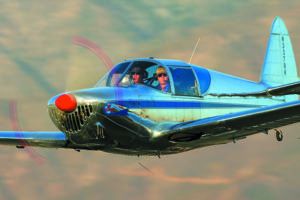
Anytime we look at the matter of an aircraft owner self-insuring, we consider what author Richard Bach did when he set out to barnstorm with a 1920s era Parks P-2A biplane in the late 1960s and found that he couldn’t buy insurance at any price.
Bach’s solution was to make training his insurance—get to know his airplane intimately, frequently practice every emergency he could imagine and resolve to only fly out of fields where he could make a forced landing if the engine quit.
Bach had emergencies with the old beast and its Wright engine, but he never scratched a passenger. The airplane got torn up a number of times, and he spent his money and time fixing it. He self-insured, and he had the ruthless self-discipline to train hard and refuse to operate where the risk was above his personal threshold so that when the worst did happen, no one got hurt.
CONCLUSION
We may be jaded, but we’ve seen many accidents involving a good pilot who made an error and people got hurt where the insurer did as it had contracted to do. It paid to repair the airplane (or paid the agreed-upon value if it had been totaled) and paid for the defense and settlement of the ensuing lawsuits.
We’ve seen self-insured aircraft owners lose a bunch of money when their airplanes were wrecked in storms or after loss of control in a crosswind. Sadly, we’re aware of widows and kids placed into bad financial situations when husbands were killed, along with their passengers, in accidents where the husbands had erred, there was no insurance and the families of the passengers sued.
Our bottom line: Don’t self-insure unless you’ve done your risk analysis homework and are willing to ruthlessly take training, refuse to fly in anything but excellent conditions and keep your airplane in top shape. We think that an owner’s self-insurance should be limited to the aircraft itself and almost never used for the liability risk.
Complaining that lawyers are driving up the cost of aviation or that insurers are rip-off artists and that you won’t buy insurance to spite them won’t protect your financial well-being if you have an accident and tear up your airplane and hurt someone. That’s not self-insuring, that’s going bare—and way too much risk for a sensible owner.




